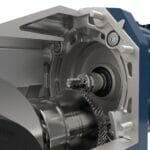~ How a single piece of data can inform a robust data strategy ~
In 1800, German philosopher Johann Fichte noted, “you could not remove a single grain of sand from its place without thereby… changing something throughout all parts of the immeasurable whole”. This philosophy is as true for industrial data as it is for grains of sand, with even highly specific information from something as innocuous as a pump helping to reshape data strategies. Here, Sean Robinson, service leader at Novotek UK and Ireland, explains how granular data forms the foundation of effective industrial data strategy.
In the past ten years, the idea of the Industrial Internet of Things (IIoT) has become a phrase uttered by engineers and CEOs alike, all around the world. The concept has come to the fore of the industrial sector in recent years for various reasons, one of the biggest being the declining cost of sensor technologies. In fact, data published by Statista indicates that the average price per sensor fell from 67 cents in 2011 to 29 cents in 2020.
This fall in price means that measurement of increasingly granular data sets on the factory floors of industrial businesses has become widely achievable. This, coupled with effective industrial data collection, aggregation and visualisation software, has made it possible for manufacturers to gain insights into their processes.
From Novotek’s experience, many industrial businesses that are new to data collection will typically use information from equipment and machines for relatively local processes, such as to inform maintenance schedules or to monitor energy or output for certain production lines. This leads to a perceived disparity between field-level data and the numbers needed to inform management-level strategy and operations, which in turns prompts many businesses to invest in several systems that ultimately collect and analyse the same data.
A more effective option is to understand how field data can, with the right analysis, underpin top level strategic insights.
For example, a typical pump — irrespective of whether it is a mechanical pump or one used for handling chemicals or liquids — will have several possible performance measurements. Sensors can monitor and communicate data pertaining to factors such as operating temperature, pressure and rotation speeds. This data allows engineers to ascertain how effectively a pump is performing individually, as well as see immediately how these factors impact throughput.
When collected data is analysed in the context of historical data, maintenance and line managers can then see that trends begin to emerge. Suddenly, that single data stream about pump speed is part of wider insight that can help to signal the indicators of poor performance, breakage and downtime — all by performing calculations and analysing the results.
With effective industrial data software, field data can be scaled even further. The pump speed data contributes to forming a comprehensive view of how a specific area of production is operating in terms of throughput. This can be viewed by plant managers to compare performance across an entire factory, and then also by country managers to assess productivity between sites.
Analysis can then be scaled up to the most senior levels, allowing for all the key operational and strategic performance indicators to be determined by running calculations on granular data.
The benefit of building data strategy from the ground upwards is clear: it prevents several systems collecting the same data because all insight is derived from analysing a clever mix of field data equations. It also means one single platform can span an entire organisation, allowing for improved problem-solving — if a country manager spots erroneous energy usage in one site, the process of finding the root cause becomes far faster.
Directors of a global manufacturing firm might not initially be too concerned with the speed of a particular pump on one production line of a specific site, but the role its data can play in supporting operational strategies cannot be understated. Just as a single grain of sand can change the landscape of a beach, granular data can underpin change throughout all parts of the measurable whole of an industrial company.







